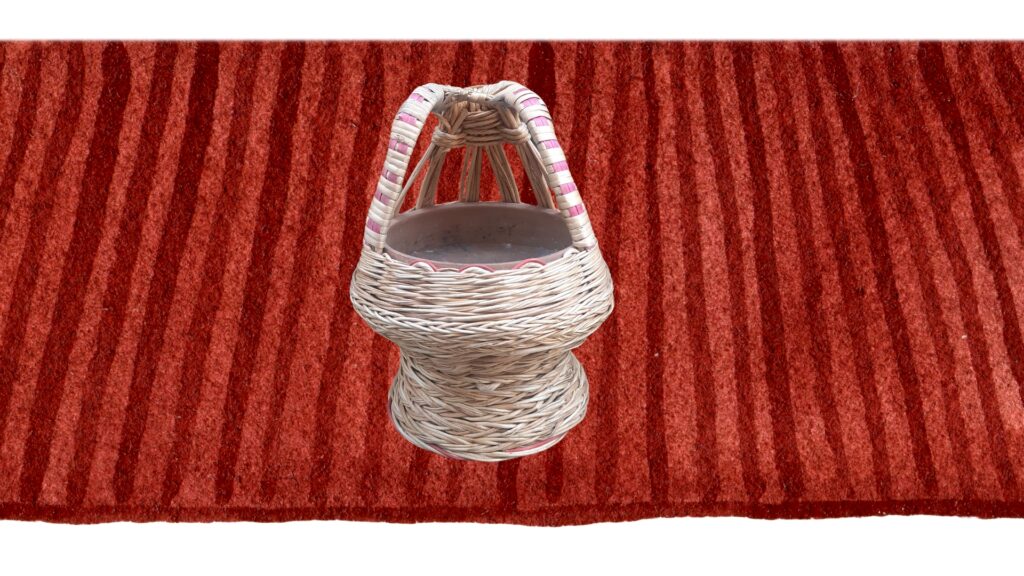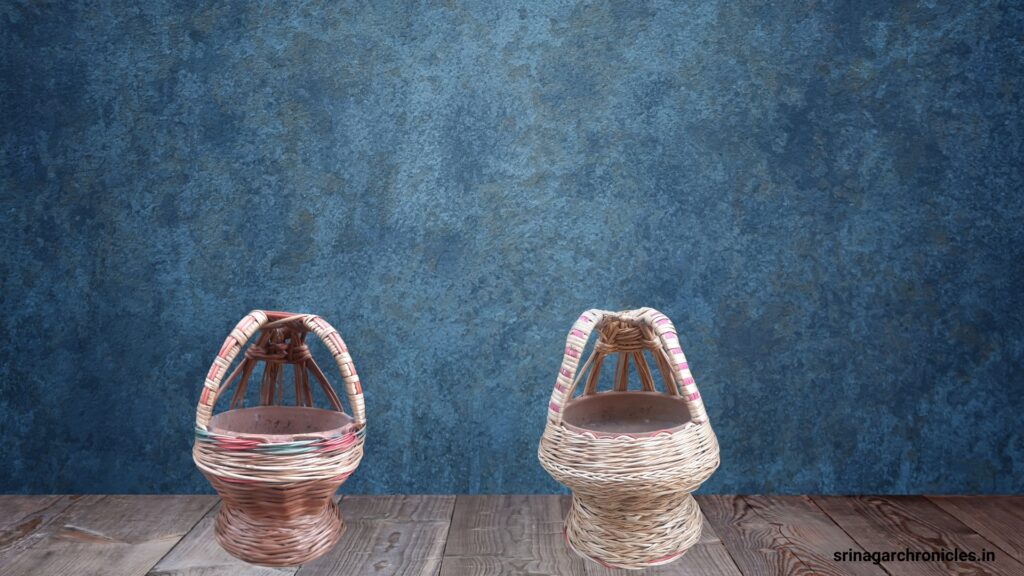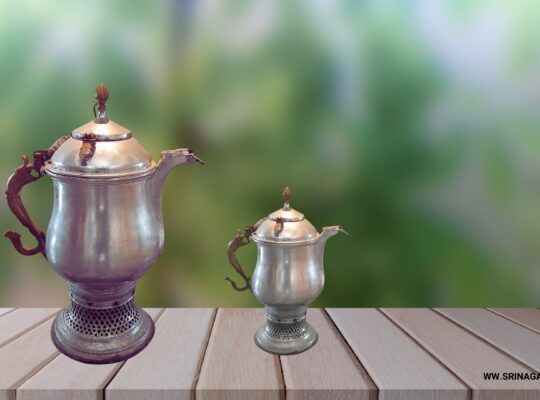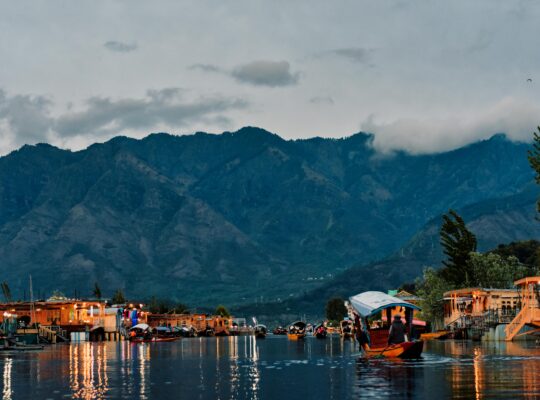Introduction to Kangri
Kangri, a traditional heating device, holds significant cultural and practical value in Kashmiri society. Its unique construction and timeless utility have made it a cherished artifact, not just for warmth but also as a symbol of heritage and tradition.

What is a Kangri?
A Kangri is a small, portable firepot typically used for heating purposes, especially during cold winter months. It consists of a woven wicker basket encased in clay, with burning charcoal or embers placed inside to generate heat.
Brief History and Cultural Significance
The origins of Kangri can be traced back centuries ago, rooted deeply in Kashmiri culture. It’s believed that the concept of Kangri was introduced by Persian artisans during the Mughal era. Over time, it became an integral part of Kashmiri lifestyle, symbolizing warmth, comfort, and community.
Traditional Construction of Kangri
Materials Used
The traditional Kangri is crafted using locally sourced materials, including willow twigs for the basket and clay for the outer casing. The inner surface is often lined with a layer of soil or ash to insulate the heat.
Manufacturing Process
Skilled artisans meticulously weave the wicker basket by hand, ensuring durability and proper ventilation. The clay casing is then molded around the basket, forming a sturdy enclosure. After drying, it’s baked in a kiln to strengthen the structure.

Purpose and Functionality of Kangri
Heating Properties
The primary function of Kangri is to provide warmth in cold weather conditions. Its compact size and efficient design make it ideal for personal use, whether indoors or outdoors.
Common Uses in Daily Life
Kangri is a ubiquitous presence in Kashmiri households, especially during winters. It’s often tucked under layers of clothing or blankets to keep individuals warm while performing daily chores or socializing with friends and family.
Kangri in Kashmiri Culture
Symbolism and Tradition
In Kashmiri culture, Kangri holds a symbolic significance beyond its practical use. It represents hospitality, solidarity, and resilience, reflecting the enduring spirit of the Kashmiri people.
Festivals and Rituals Associated with Kangri
During festivals like Eid and weddings, Kangri plays a central role in traditional ceremonies. It’s customary to exchange Kangris as gifts, symbolizing blessings and well-wishes for prosperity and happiness.
Evolution and Modernization of Kangri
Contemporary Designs and Materials
While traditional Kangris remain popular, modern variations have emerged with innovative designs and materials. Some artisans incorporate metal or ceramic elements for enhanced durability and aesthetics.
Adaptations for Tourism and Souvenirs
Kangri has also become a symbol of Kashmiri identity for tourists, leading to the production of decorative Kangris as souvenirs. These ornamental pieces often feature intricate designs and vibrant colors, showcasing the artistic talents of local craftsmen.
Environmental Impact and Sustainability
Concerns Regarding Materials and Production
Despite its cultural significance, the production of Kangri raises environmental concerns due to the use of non-renewable resources like clay and willow. Additionally, the manufacturing process may involve deforestation and habitat destruction.
Eco-friendly Alternatives
To address sustainability issues, some artisans are experimenting with eco-friendly materials such as bamboo and recycled fabrics. These alternative Kangris offer a greener solution without compromising on functionality or aesthetics.
Global Recognition and Interest
Export Market
Kangri has gained international recognition as a symbol of Kashmiri culture, leading to export opportunities in global markets. Artisans showcase their craftsmanship at trade fairs and exhibitions, attracting buyers from around the world.
Cultural Exchange and Promotion
Through cultural exchange programs and tourism initiatives, Kangri continues to garner interest among international audiences. Its portrayal in documentaries, literature, and social media platforms has further contributed to its global appeal.
Maintenance and Care of Kangri
Cleaning and Storage Tips
Proper maintenance is essential to prolong the lifespan of Kangri. After each use, remove ash residue and allow it to cool before storing in a dry place. Periodic cleaning with a damp cloth helps prevent mold and mildew buildup.
Safety Precautions
When handling Kangri, exercise caution to avoid burns or fire hazards. Use a protective covering or fabric pouch to shield skin from direct contact with hot surfaces. Keep Kangri away from flammable materials and never leave it unattended while lit.
Kangri: Beyond a Heating Device
Artistic Expressions and Craftsmanship
In addition to its practical function, Kangri serves as a canvas for artistic expressions and craftsmanship. Artisans adorn Kangris with intricate patterns, geometric motifs, and cultural symbols, transforming them into works of art.
Cultural Preservation Efforts
Amidst modernization and changing lifestyles, there’s a concerted effort to preserve the cultural heritage associated with Kangri. Artisan cooperatives, cultural institutions, and government initiatives support traditional craftsmanship and promote awareness about Kangri’s significance.
Popular Kangri Variations
Different Shapes and Sizes
Kangris come in various shapes and sizes to cater to diverse preferences and purposes. From small handheld Kangris for personal use to larger ones for communal gatherings, there’s a wide range of options available.
Decorative Elements and Motifs
Artisans often incorporate decorative elements and motifs inspired by Kashmiri folklore, nature, and religious symbolism. These embellishments add a touch of elegance and charm to the Kangri, making it a coveted collector’s item.
Kangri in Literature and Art
References in Poetry, Literature, and Paintings
Throughout history, Kangri has been immortalized in Kashmiri poetry, literature, and paintings, capturing its cultural significance and emotional resonance. Renowned poets like Lal Ded and Habba Khatoon have referenced Kangri in their works, symbolizing warmth, love, and resilience.
Cultural Impact on Creative Works
Contemporary artists continue to draw inspiration from Kangri, exploring its symbolic meaning and aesthetic appeal through various mediums. Paintings, sculptures, and installations depicting Kangri serve as a reminder of Kashmiri heritage and identity.
Challenges and Controversies
Cultural Appropriation
The commercialization of Kangri has led to concerns about cultural appropriation and misrepresentation. Mass-produced replicas sold as “Kashmiri souvenirs” often lack authenticity and undermine the cultural integrity of traditional Kangris.
Misrepresentation in Media
In popular media, Kangri is sometimes portrayed in a stereotypical or exoticized manner, reinforcing clichés and misconceptions about Kashmiri culture. Authentic representations that acknowledge the historical and cultural context are essential for promoting cultural understanding and respect.
Future Prospects and Innovations
Technological Advancements
With advancements in materials science and design technology, there’s potential for innovation in Kangri manufacturing. Lightweight, durable materials and energy-efficient heating elements could enhance the functionality and appeal of modern Kangris.
Cultural Revival Initiatives
Efforts to revive traditional craftsmanship and promote Kangri as a cultural heritage icon are gaining momentum. Collaborations between artisans, designers, and cultural organizations aim to safeguard the legacy of Kangri for future generations.
Conclusion
In conclusion, Kangri embodies the rich cultural heritage and ingenuity of Kashmiri craftsmanship. Beyond its practical function as a heating device, Kangri serves as a symbol of warmth, tradition, and resilience, reflecting the enduring spirit of Kashmiri culture. By preserving and promoting Kangri, we honor our past and celebrate our cultural identity for generations to come.
FAQs (Frequently Asked Questions)
- Is Kangri only used in Kashmiri households?
- While Kangri originated in Kashmir, its popularity has spread to other regions with cold climates, albeit in different forms and names.
- Are there any safety concerns associated with using Kangri?
- Proper handling and maintenance are crucial to ensure safe usage of Kangri. Avoid direct contact with hot surfaces and keep it away from flammable materials.
- Can Kangri be used for therapeutic purposes?
- Traditional practitioners believe that Kangri therapy offers health benefits for certain ailments, but scientific evidence is limited and requires further research.
- How long does a Kangri typically retain heat?
- The duration of heat retention varies depending on factors such as the quality of materials, size of the Kangri, and ambient temperature.
- Are there any eco-friendly alternatives to traditional Kangri?
- Some artisans are exploring sustainable materials and production methods to create eco-friendly Kangri alternatives, addressing environmental concerns.
The information provided on this blog ” www.srinagarchronicles” is for general informational purposes only and should not be considered as professional advice. We do not guarantee the accuracy, completeness, or reliability of any information on this blog. Any action you take upon the information presented on this blog is strictly at your own risk. We are not liable for any losses or damages in connection with the use of this blog.







